Nuclear blasts…they’re not thought about much in modern society — at least not as much as they were a generation ago.
But there is and always will be the threat of a nuclear blast within the modern world.
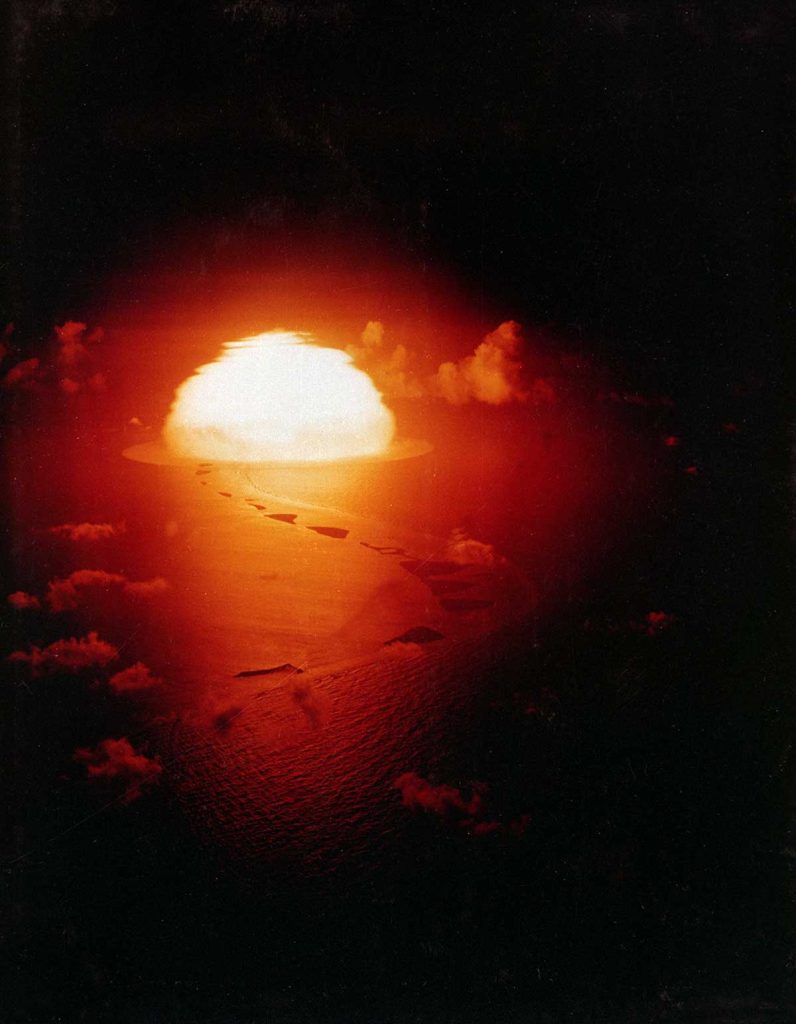
In fact, you may even be wondering…is there anything you can do during a nuclear attack?
Wouldn’t you just be vaporized?
Thankfully, there are steps that you can take which will greatly enhance your chances of living through a nuclear blast. And we’re going to lay all those out for you so you can be prepared.

From what to expect in the moments after to how to prep beforehand, we gathered the top suggestions to ensure you have the best chance at survival.
But first, let’s take a look at the down and dirty of what you need to know about nukes.
Table of Contents
Loading…
How to Prepare for a Nuclear Attack…Before It Happens
As we mentioned initially, there are steps that you can take ahead of time to improve your chances of surviving a post-nuke environment.
What are they? Well, for starters:
1. Make a Bug-Out Bag
I find it interesting to note that FEMA practically advocates that all of the American public keep 24 hours’ worth of food, water, and supplies readily accessible at all times for disaster preparedness.
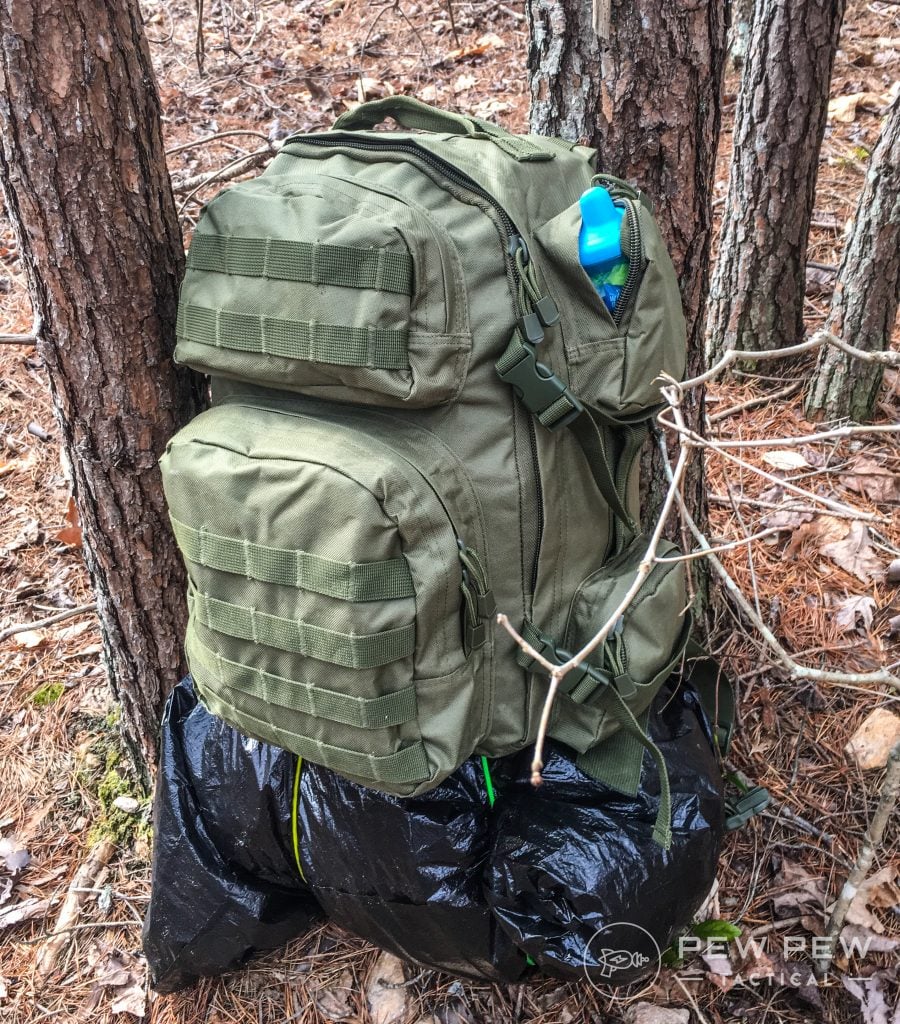
This is nothing more than government sponsorship of bug-out bags, is it not? It seems we preppers aren’t as crazy as everything initially thought we were, after all.
Keeping enough food and water on hand to last for 24 hours will not only allow you to make it through the first day of a nuclear holocaust with what you need to survive but could help you make it through a wide number of other more common scenarios (tornado, earthquake, flooding) as well.
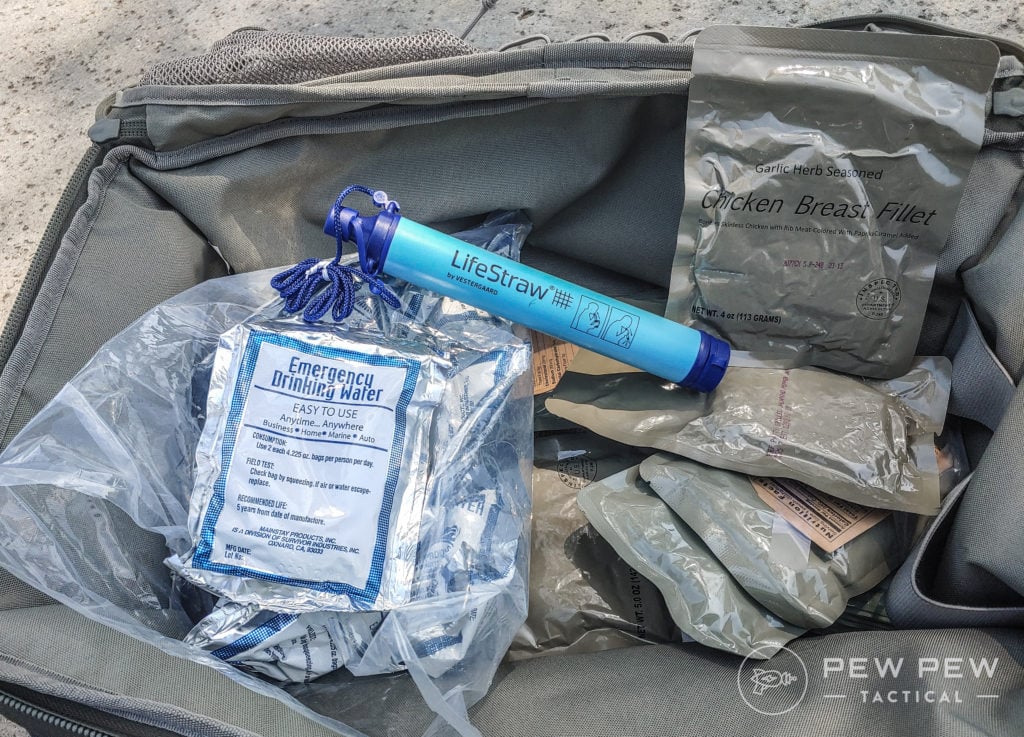
So first, make a bug-out bag. There’s simply no reason not to have one in modern society.
If you’re looking for tips on how to make your own, we’ve got some great advice on the subject.
Or, if building one seems too arduous, pick up a pre-made bug-out bag. Remember, you’ll want one that can carry you for at least 24 hours, if not longer.
Look for things like a first aid kit, tent, water purification, food, and hygiene products.
-
25% off all OAKLEY products - OAKLEY25
Copied! Visit Merchant
Make sure to throw in some iodine pills for good measure!
These will help protect you from radiation in the days following an event.
Prices accurate at time of writing
Prices accurate at time of writing
-
25% off all OAKLEY products - OAKLEY25
Copied! Visit Merchant
Additionally, you might want to consider tossing a gas mask in your bag as well.
Our favorite is the CM-6M from Mira Safety.
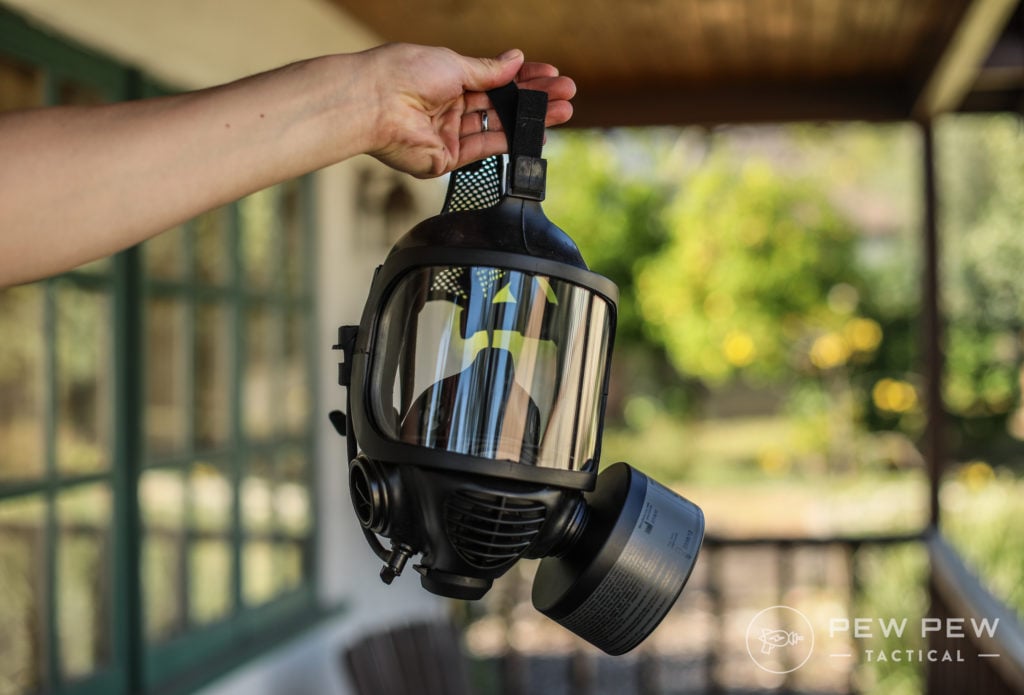
It’s CBRN-rated, meaning it can handle nuclear, biological, and chemical events a little extra radiation protection snuck in.
That “R” protects against dirty bomb isotope fallout.
Prices accurate at time of writing
Prices accurate at time of writing
-
25% off all OAKLEY products - OAKLEY25
Copied! Visit Merchant
It uses standard filers, but you can also opt for one of Mira Safety’s own, which lasts in storage for 20 years. (Psst…PPT readers get 15% off at Mira with code Prepare15.)
To learn more about this one or shop for other gas mask options, check out our full round-up on the 12 Best Gas Masks, Face Masks, Respirators, & Filters [Hands-On].
2. Know Your Shelters
You make better decisions when you think through what you would do ahead of time. The same goes for choosing a shelter.
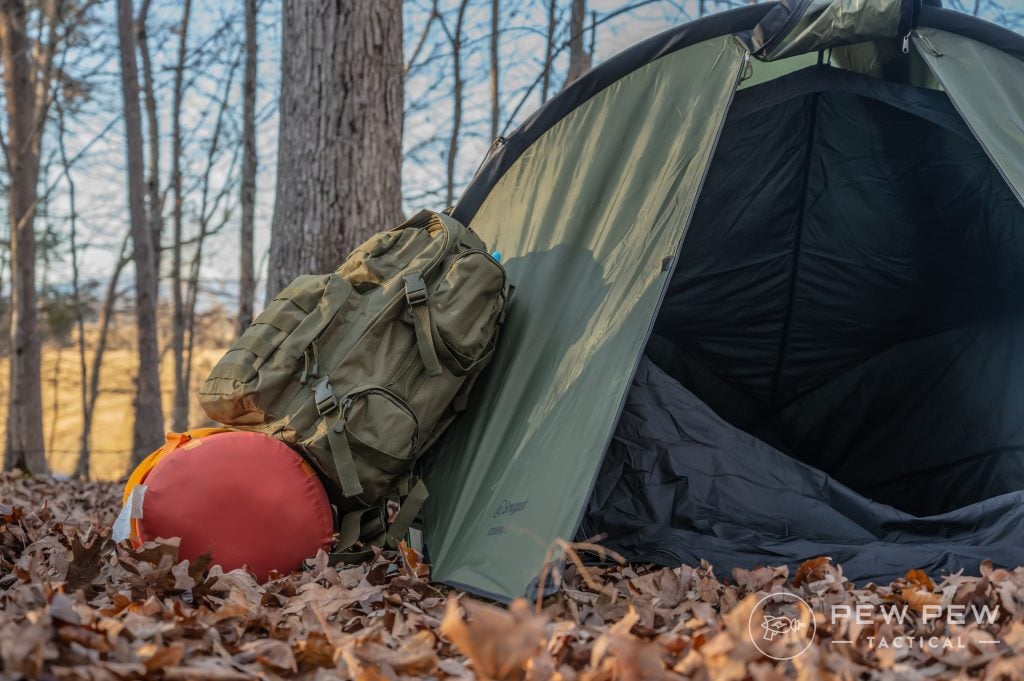
Making a mental note of good places to shelter on your route to work, the gym, or wherever is a great way to have a ready plan should you ever have to use it.
3. Stock Supplies
If you have a pre-planned location where you’re going to shelter, it makes sense to have everything already in place that your family may need to survive.
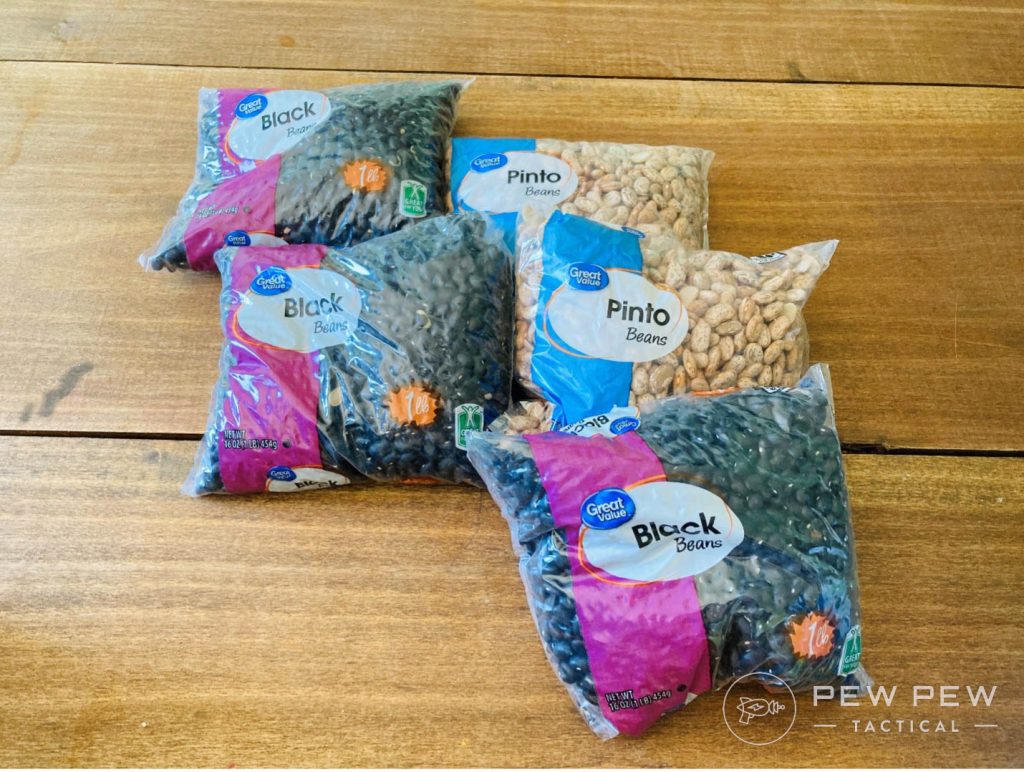
Basically, this boils down to food, water, a place to sleep, warm clothing, a bathroom, a shower, and staying clean.
If you have the necessary equipment for that, you’re golden.
Make sure to check out our guides to get you set up.
- Long Term Food Storage: Fresh Food for Survival
- 10 Best MRE Brands & Kits for Survival
- 9 Awesome Do-It-Yourself MREs
- [How To] Stockpile Food & Water for Emergencies
- Supermarket Food List: How to Prep Your Pantry for Survival
4. Consider a Geiger Counter
A Geiger counter measures fallout and alerts users when radiation levers are too high.
In the aftermath of an explosion, it might be wise to have one of these around.
-
25% off all OAKLEY products - OAKLEY25
Copied! Visit Merchant
Nuke Inbound…
Back in 2006, the U.S. government created the Integrated Public Alert and Warning System (IPAWS), which allows them to send out emergency alerts to all Americans via their cell phone providers.
Hawaiians got a taste of this in 2018 when they all received emergency alerts on their phones that a nuclear missile was on its way. It was supposedly a mistake.
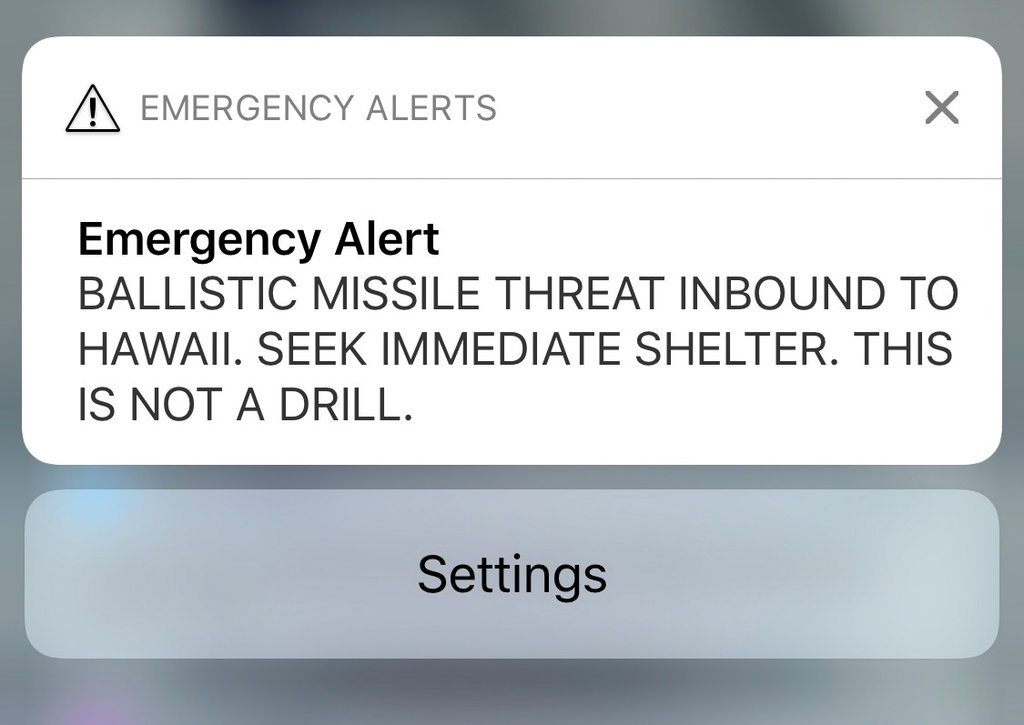
America offers one of the best early alert systems in the world.
So, there’s virtually zero chance that a nuclear missile would head our way without us knowing.
If there’s another nation sending a nuclear ICBM, you’re likely to have at least some warning.

The length of time that you’ll have varies depending on how close you are to the launch zone. For example, a North Korean nuke wouldn’t give as much warning to a Californian as it would to a Georgian.
But, regardless of where you are, you should receive some form of heads-up. Your best bet in such a situation is to seek shelter and fast.
Bad news…if your location is the intended target of the missile, you’re pretty much screwed. It’ll be only a few minutes until you’re turned to ash.
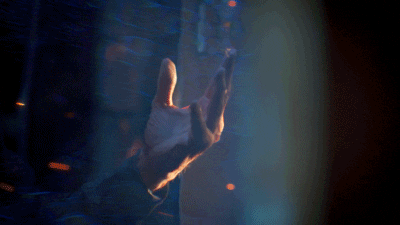
The good news is you’ll never know with any certainty exactly where the ICBM is headed. Perhaps it’s your town. Maybe it’s the town 30 minutes away. So there’s some hope.
If possible, seek shelter in the basement of a very strong building.
Large multi-story commercial buildings are likely the best. These feature incredibly strong, dense basements that may help shield you from the initial blast.
Radioactive Fallout
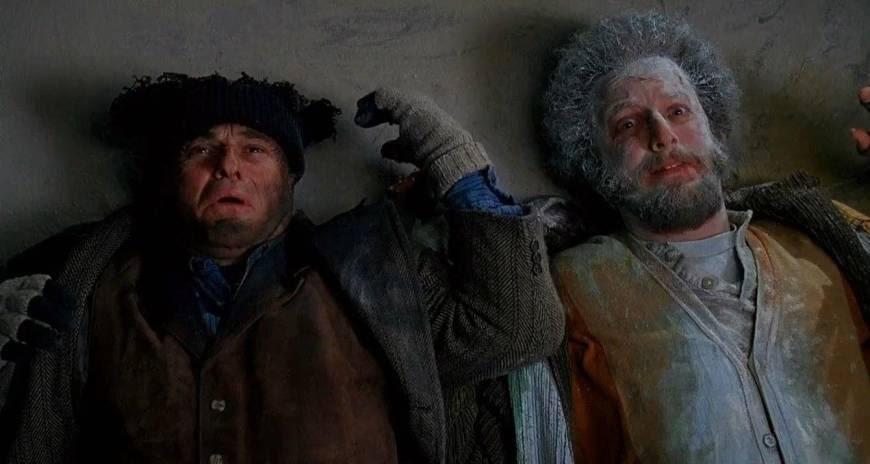
Assuming you made it through the blast, congratulations! That’s a big accomplishment!
You’re not in the clear yet, however.
The next thing to worry about is something called fallout — radioactive dust particles that begin falling from the sky.
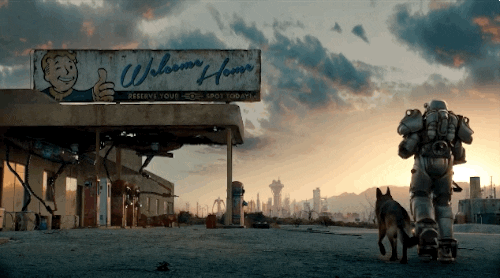
You have roughly 15 minutes before this begins to rain upon your head, so you need to do something — fast. If you don’t seek shelter, you will die from radiation poisoning. It’s not a pretty process.
All of your hair will slowly fall out in clumps. Your skin will turn an ashen gray, and you’ll be covered in burns. Not to mention you’ll feel miserable and incredibly nauseous.
The radiation levels will be at their highest for the first few hours post-blast, but thankfully, it will degrade rather rapidly. But you’ll want to stay sheltered for at least 24 hours before you think about moving elsewhere.
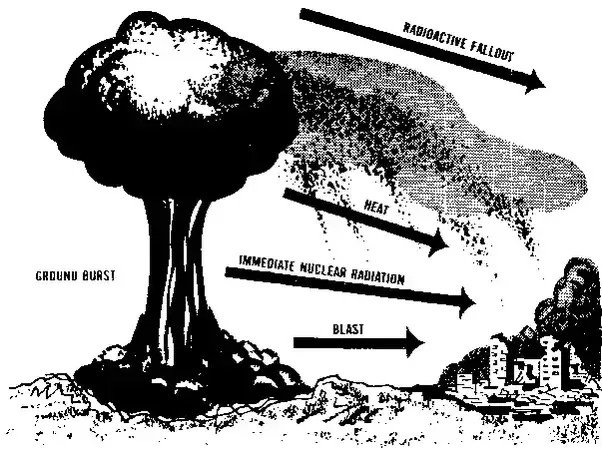
This fallout will be visible, coming in the form of large grey and black dust particles.
So, your first course of action needs to be to find somewhere safe to bunker down as quickly as possible.
Find Shelter
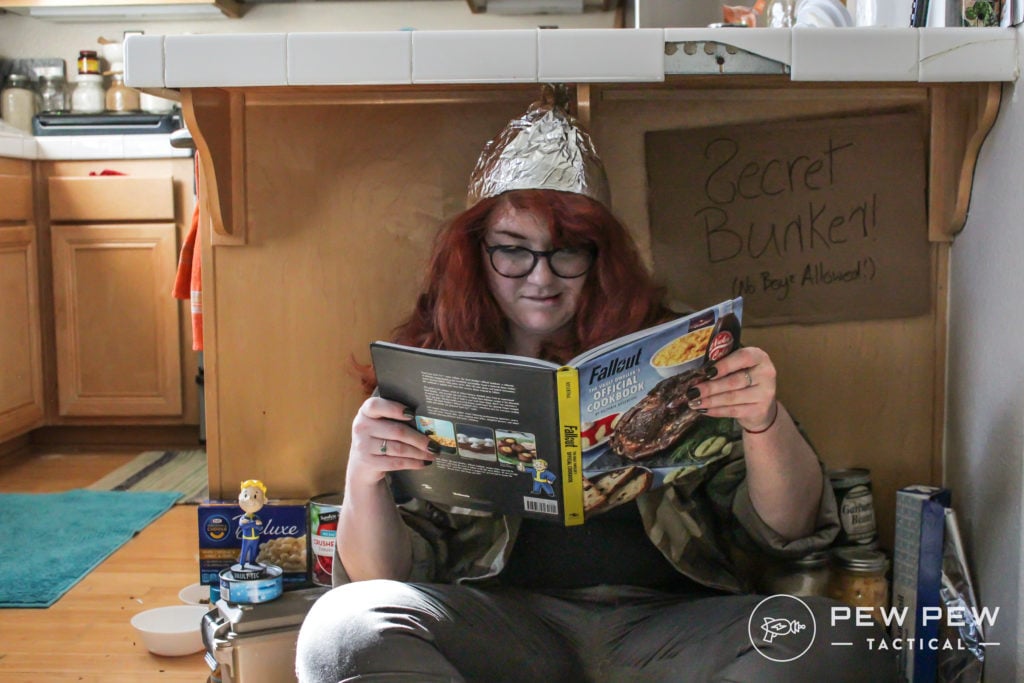
That fallout gives off radiation the entire trip back down to earth and then some.
You need a structure that will not only protect you from this radiation as it’s falling but also as it accumulates on the ground.
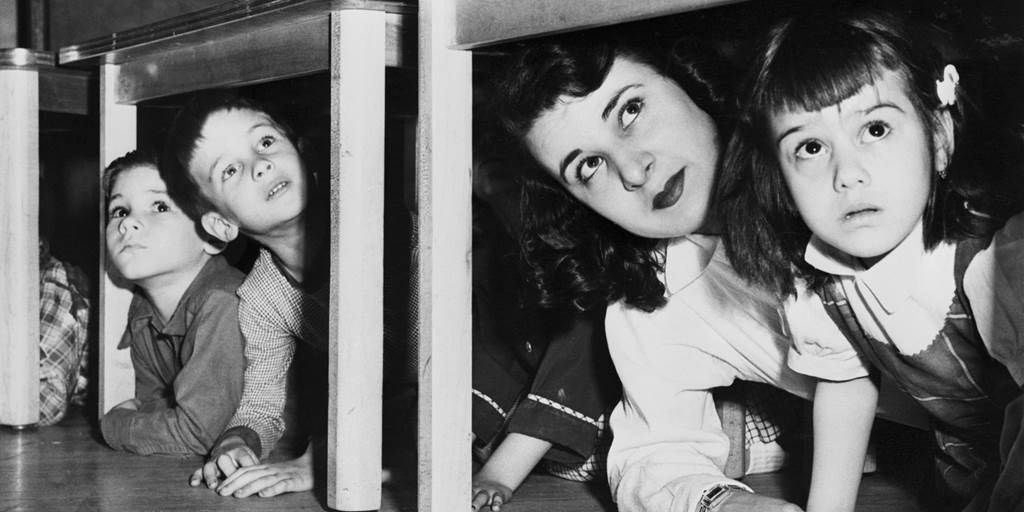
Stick-built structures (e.g., most residential homes) offer little protection.
Don’t get me wrong, they’re most certainly safer than the alternative of standing outside, but you really need to find something safer.
A brick or concrete structure will shield you much better from radiation than a sheet of plywood, and some drywall will. Typically, the larger the building and the heavier the construction material, the safer you’ll be inside it.
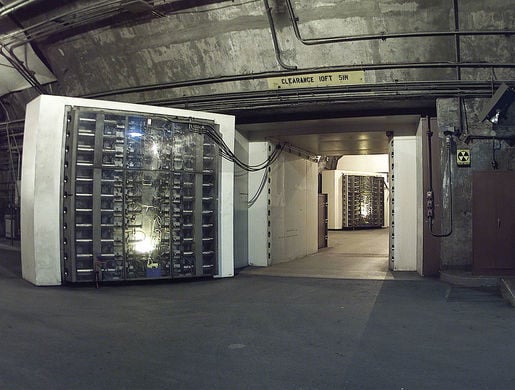
If you’re in a big commercial building, or even if you’re in a neighborhood where your only safe bet is a basement, take it.
Basements will be much safer than being on the ground floor due to the radioactive dust accumulating all around the house and giving off radiation that penetrates your walls.
Wash Up & Get Rid of Clothes
Once you finally reach shelter, you may have some fallout on you. So, you want to remove your clothing and put it far away from your shelter.
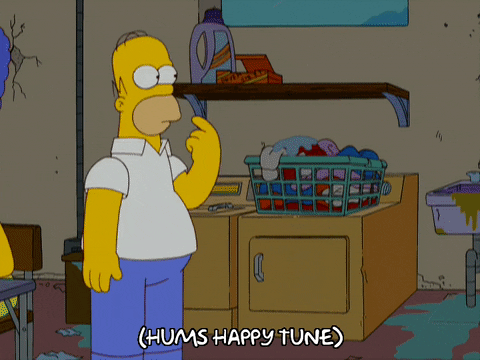
Then, wash the radiation off of your skin. A shower is the best way to do this. Provided that’s not an option, you can use a wet washcloth to clean yourself off.
Hand sanitizer won’t do a dang thing for you, so don’t even worry about it.

If, perchance, you are en route to a safe shelter when the fallout arrives, know that it is much safer to begin to brush the fallout off of your body with your hands than it is to wait until you can finally access a shower.
I understand the fear of actually touching it and just wanting to leave things be, but the longer it’s on you, the longer it can cook you.
That said, you certainly want to avoid touching your eyes, nose, or mouth at this point. You don’t want radiation inside of you.
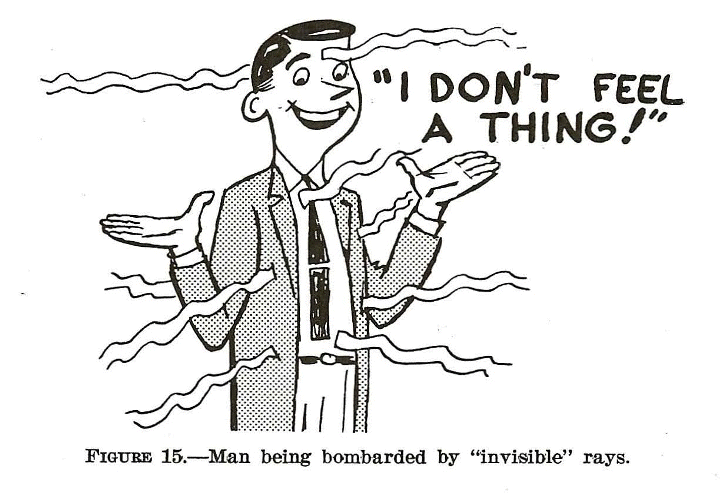
Fallout can be blown somewhere around 20 miles by upper atmospheric winds as well.
So, if you live within 20 miles of the blast, you need to be aware of the possibility of fallout heading your way.
Stay Away From Outer Walls and the Roof
This makes sense.
If the whole goal of the shelter is to put as much distance between yourself and fallout as possible, then you will want to avoid these parts of a home. Even within a basement, this same principle applies.
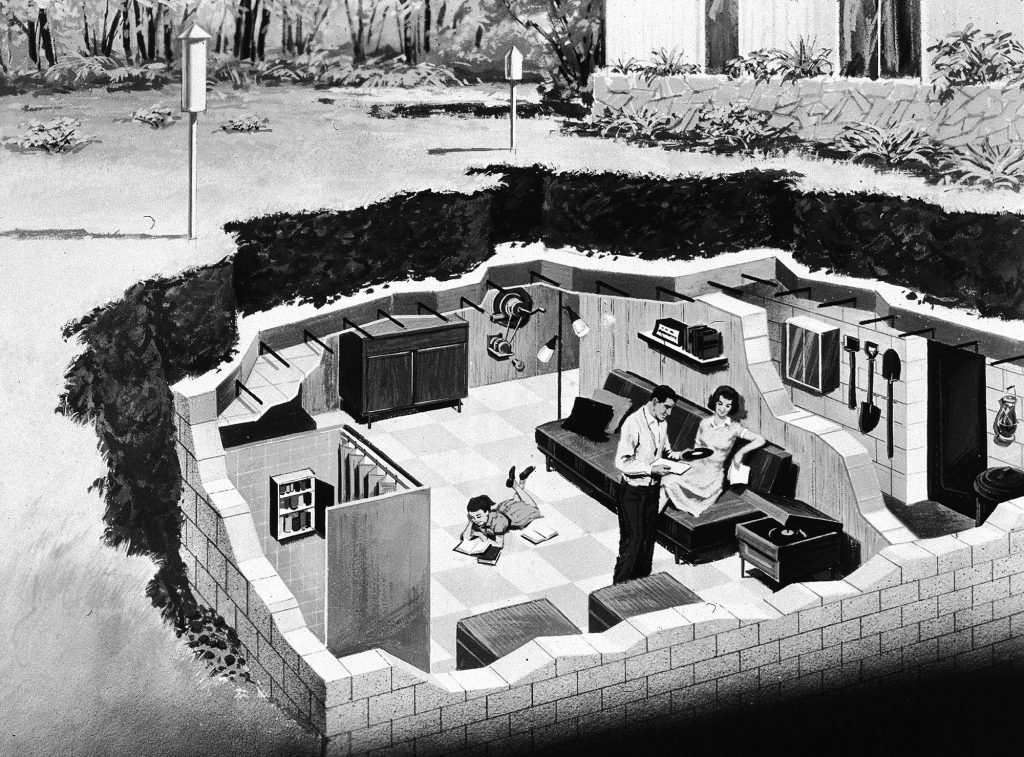
A lot of homes have basements that can be entered from the outside. If such is the case for where you’re sheltering, then you’re better served to hunker down on the side that has an earthen wall.
To be near the above-ground part of the basement in such a situation is to, in essence, be on the ground floor. As we’ve discussed above, that is bad.
Avoid cars, mobile homes, and pagodas since these offer little to no protection whatsoever from exposure, or you will quickly succumb to radiation poisoning.
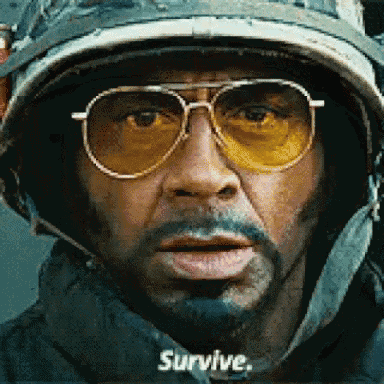
If you’d like to look at how a mushroom cloud would affect your region, there are some interesting tools you can tinker around with online at Nuke Map and Nuclear War Map.
Both of these sites allow you to map out the likely fallout patterns and blast radius of a nuke at any place on the globe and are incredibly interesting.
Post-Blast Survival & Considerations
EMP Blast
One of the lovely things about a nuke is that it generates an electromagnetic pulse when it explodes. This will fry all electronics for miles.
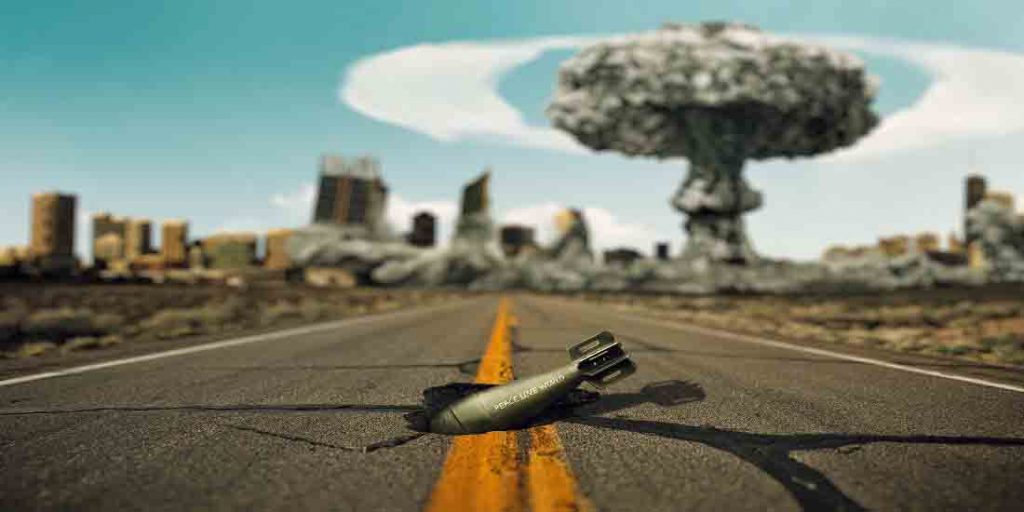
So not only will you be in a radioactive wasteland, but you won’t be able to read Pew Pew Tactical either. Insult to injury, huh?
Fires Everywhere
There’s a bit of debate on this point within the current literature on nuclear weapons. I am of the camp that there will be widespread fires post-nuke.
While most urban centers are built with steel and concrete (not combustible), there is always a threat of fire within a building.
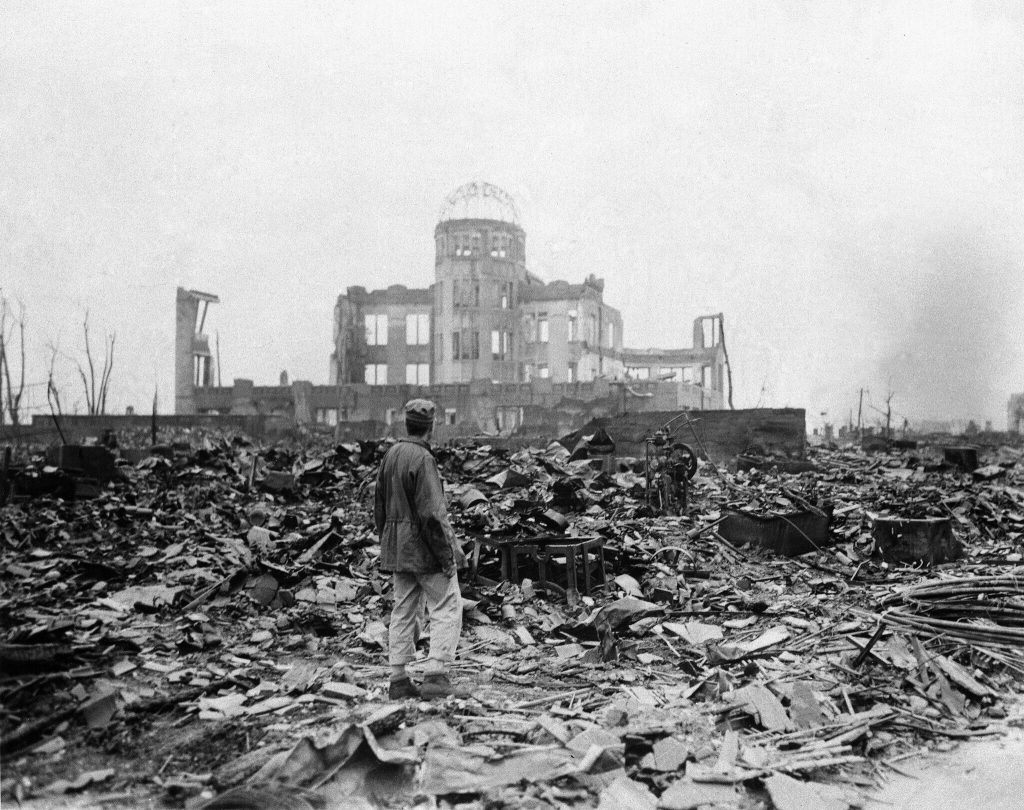
And I’m not aware of any more foolproof method to start a fire than to drop a nuclear bomb.
Widespread Glass Injuries
The initial blast and shockwave will break glass up to 10 miles away.
Anybody near glass at the time of detonation will suffer lacerations — that is, deep cuts or tears in the skin.
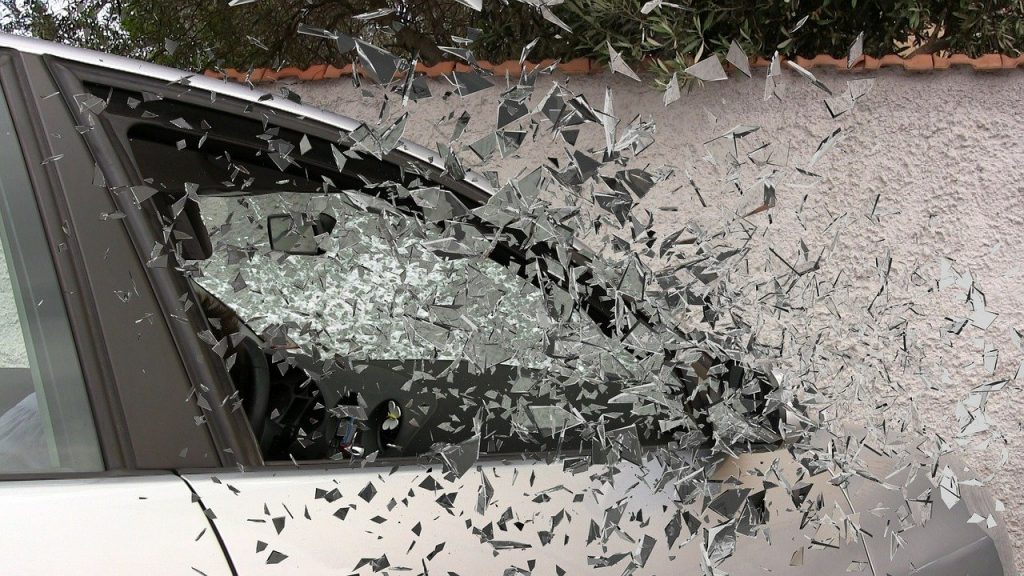
Consequentially, there are going to be a lot of people killed by glass injuries rather than radiation.
It’s because of this that you’re going to want to have some form of first aid kit on your person at all times.
Prices accurate at time of writing
Prices accurate at time of writing
-
25% off all OAKLEY products - OAKLEY25
Copied! Visit Merchant
You may be the person shredded by glass.
It also helps to know what to do in the event of a cut, so check out our guide to the Best First Aid Classes to get trained up.
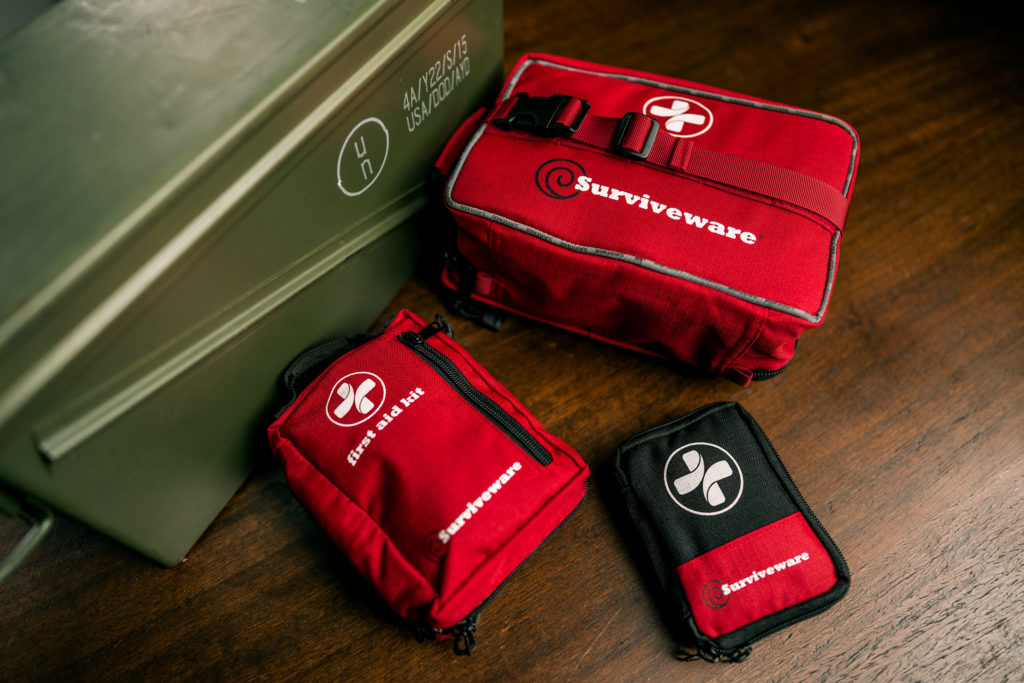
Flash Blindness
Unlike The Book of Eli or The Road, it doesn’t appear that there will be permanent blindness associated with a nuclear blast.
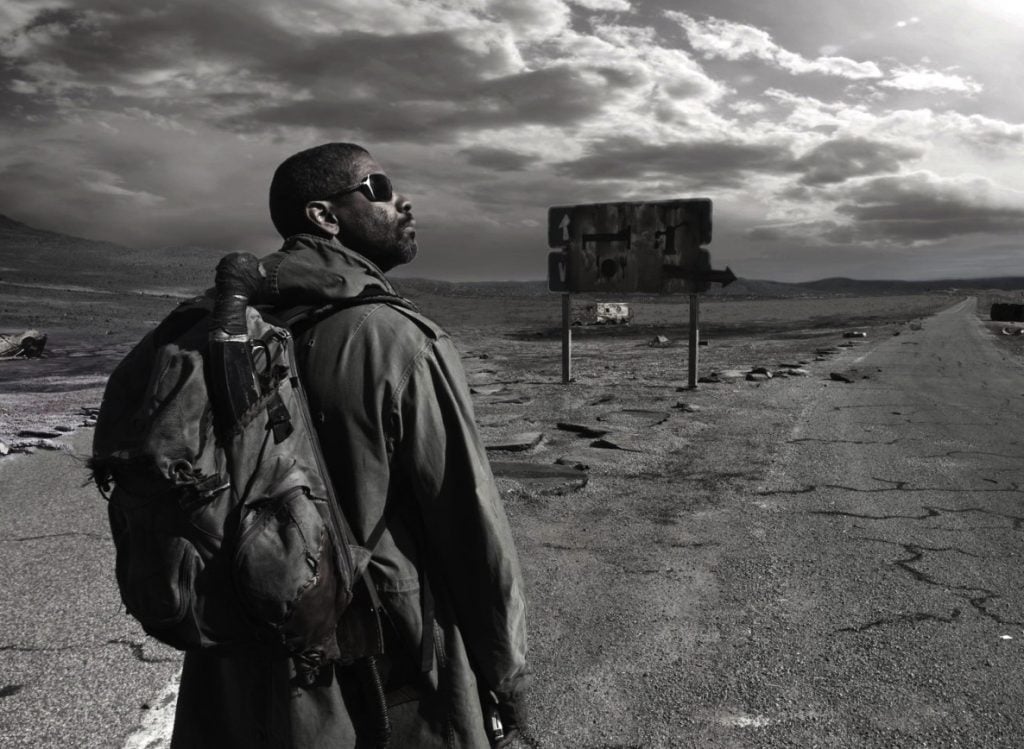
This could just be a feel-good message that the government is feeding us, but from what we’re being told, any blindness associated with a nuke should be temporary.
Most likely, people will regain their vision in less than a minute.
That said, this will cause traffic accidents. Flash blindness can hit people up to 12 miles from ground zero, and there will be planes, helicopters, trucks, cars, and buses en route when such an event occurs.
As a result, accidents will be responsible for many deaths post-blast.

There’s not really anything that you can do to prepare or avoid such — the nuke is likely going to be a surprise. But, if you know a nuke is on its way toward a city a few miles away, it would be best not to watch.
Radiation Sickness
You are very likely to come into contact with those who are victims of radiation sickness post-blast.
This will likely be those who didn’t reach shelter soon enough or ever. These people are likely to die a rather miserable death, and here’s what you need to know.
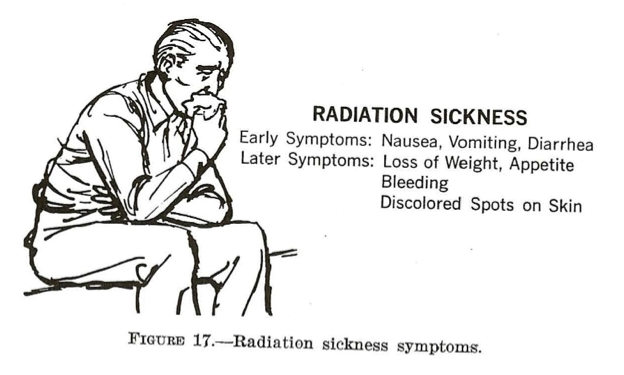
To begin with, it’s not contagious. You can’t catch radiation sickness simply by being around somebody who has it.
However, that person is likely covered in radioactive fallout. So until you can get the person clean of the fallout, you must be careful with how close you get to them.
Coming Up with a Long-Term Game Plan
So let’s say that you made it through the initial blast and into shelter before the fallout started falling.
What now?
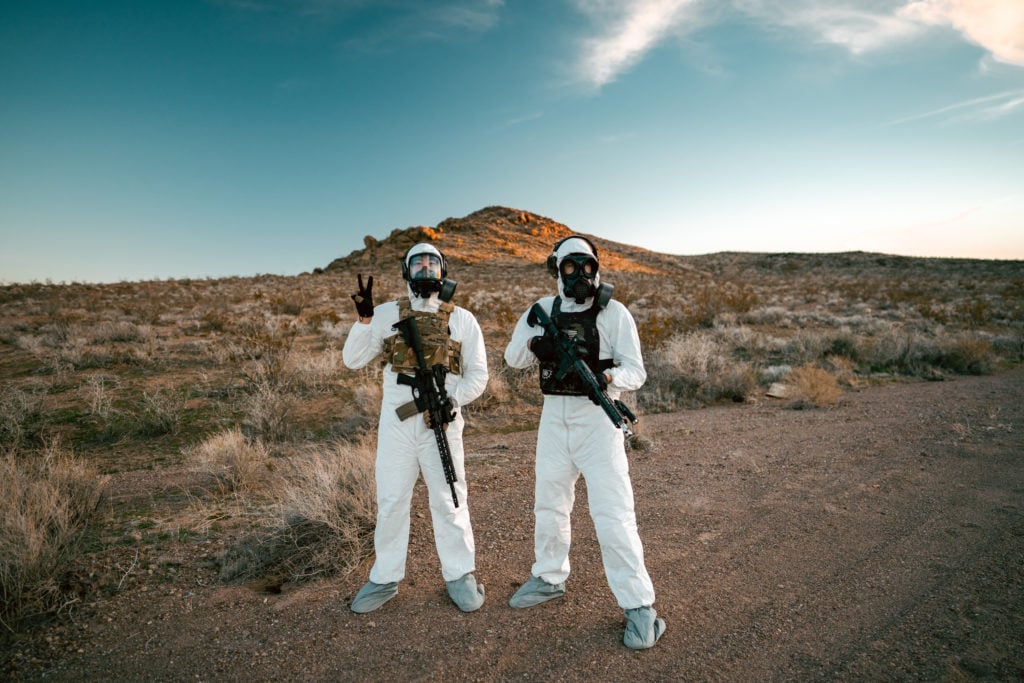
You likely have questions about food and water. Is what you have around you safe to ingest?
You certainly don’t want to eat radioactive material, but you’re not sure what is and isn’t at this point.
Provided that the food you have was inside when the blast went off, bottled water, food within a refrigerator/freezer, and sealed food should be fine to eat.

What you want to avoid is food that is or was outside.
If you stumble across a garden post-blast, eating the vegetables is a good way to end up dying from radiation poisoning a day or two later.
The same could probably be said for drinking city water.
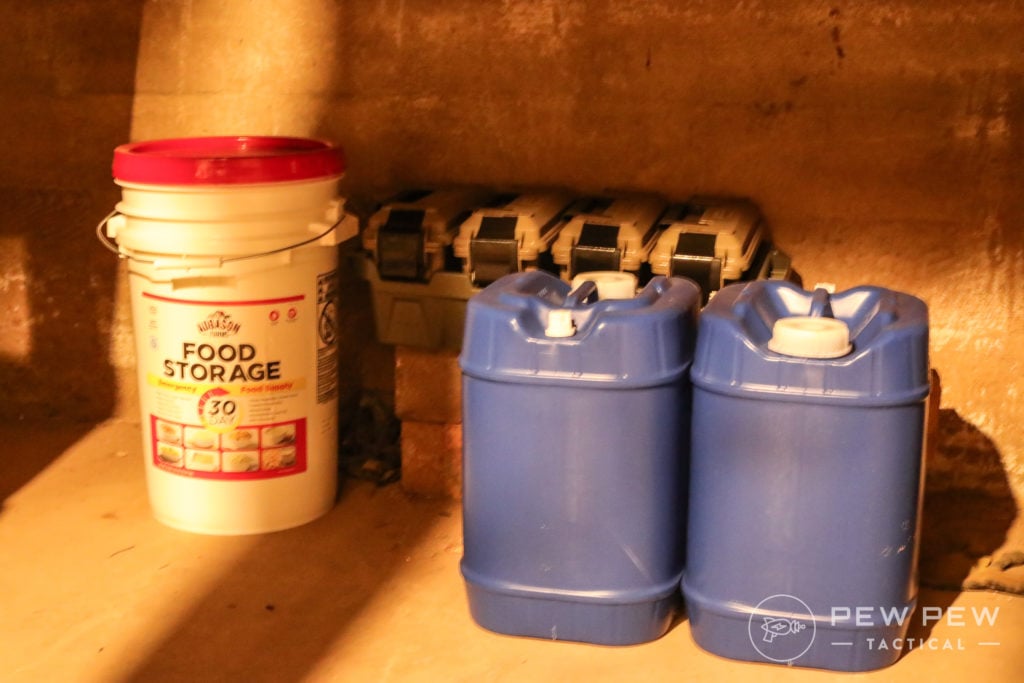
For safety’s sake, avoid anything that you don’t already have stored inside your shelter or home. It would suck to survive a nuclear blast and the initial radiation, only to die by eating contaminated food.
As far as sheltering in place goes, you’ll want to have some type of hand-crank radio available.
This will get you the information that you need to make a more informed decision regarding what you should do evacuation-wise. Without it, you’re kind of just shooting in the dark.
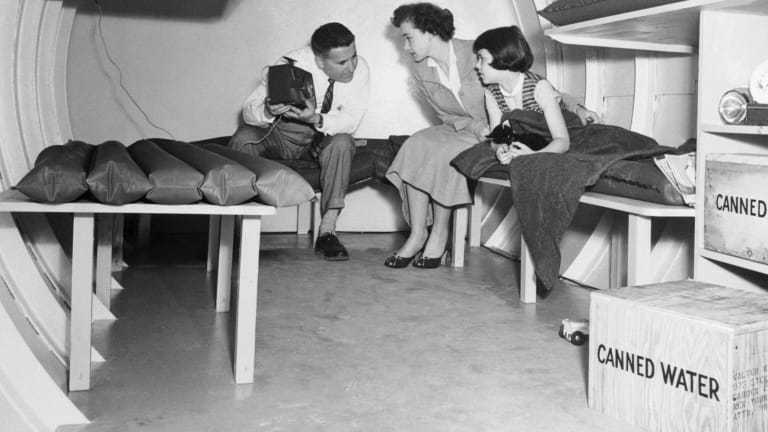
Final Thoughts
Nukes are still a threat within modern society.
Remember that essentially everything that you prep for a nuke is easily used in other disasters, with the exception of a Geiger counter.
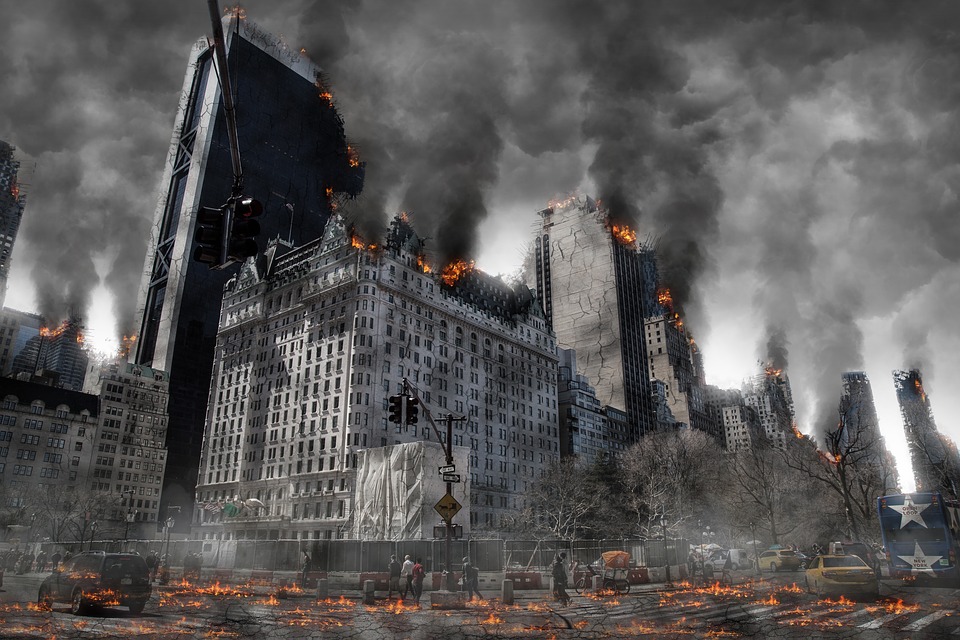
Whether we’re talking about food, water, or off-grid showering equipment, these are all items that can serve their purpose under a wide variety of conditions.
So, stock up and be ready because you never when disaster can strike.
How would you survive a nuclear event? Let us know in the comments below! Want to start prepping? Check out Prepping 101 for all the details you need to know as a beginner, or get more survival advice from our long list of survival-related articles here!

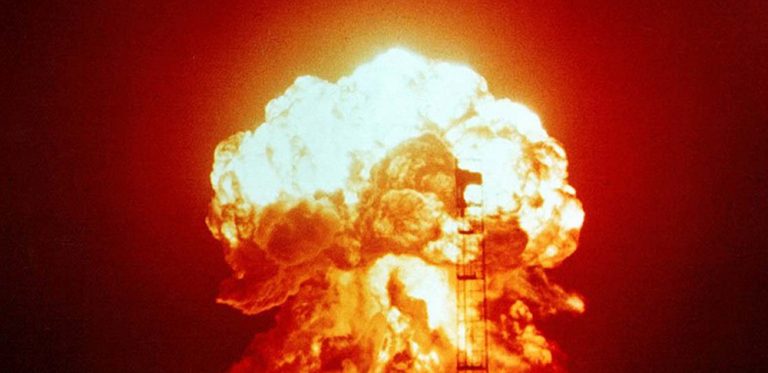


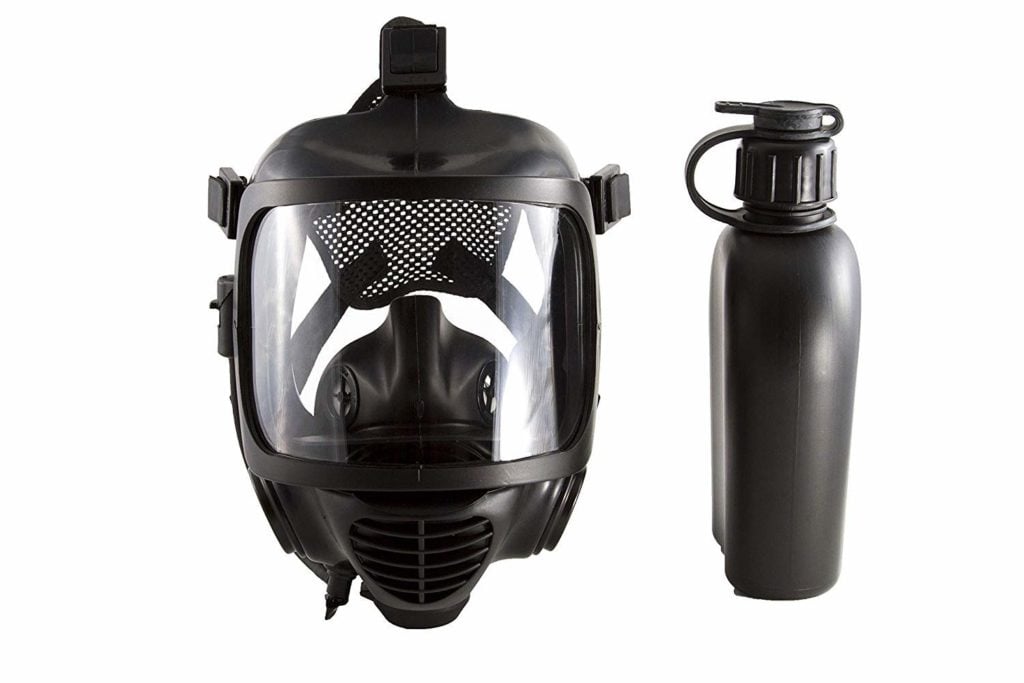









27 Leave a Reply
Lawn chairs for my wife & me, a couple cold beverages & our bibles since it'll be the first & last time we see it happen.
There are different nuclear scenarios. 1: Terrorist set off a nuke. 2: limited nuclear strike, all out war.
For the first one, survival chances are good unless you are in the target zone. Still, the disruption of food and energy delivery systems, financial markets would be very bad. The second scenario would be worse. The third scenario would result in @ 120,000,000" to 180,000,000 deaths and another 50-80 million injured. In our US war planning troops would remain in shelters two weeks not one day. Savange canned foods could be eaten safely after the external surfaces were washed off!
"The radiation levels will be at their highest for the first few hours post-blast, but thankfully, it will degrade rather rapidly. But you’ll want to stay sheltered for at least 24 hours before you think about moving elsewhere. "
Hmmmm no.
For most nuclear weapons, approximately seven - ten hours after a nuclear explosion RESIDUAL radioactivity will have decreased to about 10 % of its initial amount. After another 48 hours it will have decreased to approximately 1 % of its initial amount. You do not want to risk being exposed while the residual radiation is above 1% especially if you have small children or babies which are more at risk, so the minimum amount of time when you can possibly leave the shelter for short periods is 48 hours so use that short period time to get away from the area as far as you can.
That's for residual radiation, if that's the only thing to worry about then ok but that's not the only thing to worry about. The real problem is going to come with avoiding isotopes produced by the blast. You have other problems for exposure, isotopes with longer half life's. For example: Even though there is a whole list of isotopes that will be present and each with their own half life's - Since the article points out iodine tablets I'll use Iodine ... there are 37 known isotopes of iodine, and only one IS NOT radioactive (Iodine-127). Iodine-129 and Iodine-131 are the two more common isotopes from nuclear fusion. Iodine-131 is the most common radioactive Iodine isotope that results from nuclear weapon explosions - Iodine-131’s half-life is 8 days. So lets realize what 'half life' is... it does not mean it becomes 'safer', basically its half after a certain period of time - so for Iodine-131 its radiation is half of its initial level at 8 days and then half of whats left from that 16 days later (another 8 days) - so at 16 days we are still at about 25% of its initial radiation level. So just for Iodine-131 its going to be around two weeks to get down to 10% or less. (If its a nuclear disaster not resulting from an attack 'weapon', for example, that nuclear power plant goes critical and blows up, then there could also be Iodine-129 which can stay around for millions of years.). Probably the most serious threat is going to be cesium-137, a gamma emitter with a half-life of 30 years and its going to be in all of the fall out covering everything and gamma radiation is the most dangerous.
So leaving the shelter is not as easy as staying sheltered "for at least 24 hours before you think about moving elsewhere." get out and away, time and distance, the less exposure time and getting the farthest away in distance, period.
I've also found the "stockpile iodine tablets" thing to be silly. In any nuclear attack scenario, there are going to be a lot of people dying from acute radiation sickness with their thyroids being the only part of them not messed up. It's also quite possibly one of the only types of cancers that might still be operable post-attack so long as you don't mind the "bite on this" form of anesthesia.
Having iodine tablets in a nuclear 'emergency' is not a bad idea, if you want to do something that might work to protect your thyroid from developing cancer several years later IF YOU SURVIVE.
Taking the (usually 'potassium') iodide tablets saturates the thyroid gland with stable iodine, to overload it so it will not accept any more iodine thus keeping the thyroid from taking in radioactive iodine so as to help possibly prevent a possible future thyroid cancer several years later. But the objective is not to stop radiation exposure or sickness or associated injury/death yet that's the perception given with general unqualified statements for iodine tablets such as in this article like this > "These will help protect you from radiation in the days following an event." > well, no, its not true that iodine tablets help "protect you from radiation in the days following an event"
If you are exposed to radioactive iodine you have been exposed to radioactivity, period. Iodine tablets do not help protect you from radiation, period.
There is nothing about taking iodine tablets that decreases or protects you from the effect of this radiation or any radiation on the rest of the body. The part that the survivalists and companies touting 'anti-radiation' iodine do not tell people about is that it does not stop or prevent radiation sickness or death or the other associated illnesses and injury from radiation. All it does is help protect the thyroid from possibly developing cancer in the future IF YOU HAPPEN TO SURVIVE - it does not stop the other cancers and health problems from developing, it does not stop radiation sickness and it does not stop you from being overall affected by the radiation.
I think this article should be revised to qualify the statement "These will help protect you from radiation in the days following an event." in relation to the iodine tablets. It is not true that iodine tablets "protect you from radiation".
Clarification for : "If you are exposed to radioactive iodine you have been exposed to radioactivity, period. Iodine tablets do not help protect you from radiation, period."
Radioactive iodine is not always a stand alone thing. It is always accompanied by other radioactive isotopes and radioactivity in a nuclear detonation scenario (Iodine-131) where in a nuclear disaster (e.g. the nuclear power plant melted down) it (Iodine-129 expected, but Iodine-131 is possible depending on the type of disaster 'accident') may not always be accompanied by other radioactive isotopes and radioactivity. Basically; Assume If you are exposed to one you are exposed to all. Radioactive iodine does not stay in the body forever or years, there are three things about about radioactive iodine in context with exposure risk and a nuclear 'disaster'/war/attack:
1. Like non-radioactive iodine, it has a half life, 'in the wild' (outside and in the air) of about 8 days usually but assume 10 days minimum to be 'safer'.
2. The effective half life for clearance of radioactive body burden for radioactive iodine is about 5.5 days on average (but allow for 7 days minimum), this is not the same as 'in the wild' and is 'clearance of radioactive body burden' which is different.
3. Its eliminated from the body though urine so drink lots and lots of water, in your plans account for this with your water supplies. The general rule is the same for 'adequate' hydration: If the urine is not clear you are not drinking enough water. Even if you think you may not have been exposed, drink lots and lots of water because its likely you have been exposed at some level unless you are in a hermetically sealed shelter with its own self contained air supply because its going to be in every breath you take for several days unless you filtered it out.
Thyrosafe Potassium Iodide Tablets work, basically, by filling the thyroid gland up with so much iodine, whether it’s radioactive or not, that it can’t absorb any more thus blocks radioactive iodine (a 'radionuclide') from entering the gland and can help protect it from injury.
The thyroid gland produces hormones that regulate the body’s energy and metabolism. The thyroid normally absorbs available iodine from the bloodstream, but it can not distinguish between stable (regular) iodine and radioactive iodine and will absorb any iodine it can get. The thyroid gland is one of the most radiation-sensitive parts of the body and at greatest risk, especially in babies and children who are at extremely high risk of exposure to radioactive iodine.
When the thyroid absorbs too much radioactive iodine it can cause thyroid cancer to develop (within) several years after the exposure. Babies and young children are at highest risk, the risk is much lower for people over 40. Thyroid cancer seems to be the only cancer whose incidence rises after a radioactive iodine release, however, it does not mean that other types of cancers in the body can not develop from exposure to radionuclides and radiation.
Iodide Tablets DO NOT protect against radiation exposure or from other, potentially more dangerous, radionuclides spread into the air/areas during a nuclear event/explosion.
In a nuclear attack radioactive iodine is released into the air. Every breath you take will be filled with this and other radionuclides. Radionuclides are going to touch 100% of everything, period, either immediately or later, no matter how well protected or sheltered you are. This is mostly concentrated in fall out zones which are, basically, anywhere there is radioactive fall out and not just in the ground zero zone or for a few miles around ground zero. Radioactive fall out is going to anywhere the air currents take it or its some way or another transported to some place (e.g. bought into the shelter, or where you are at, on shoes/garments/equipment/vehicles etc...).
There are many radionuclides released in a nuclear explosion, some occur naturally or we are exposed to them on a regular basis. For example, Tritium (chemically 3H) is produced naturally in the upper atmosphere when cosmic rays strike nitrogen molecules in the air, its in all the water and foods we ingest in extremely low concentrations and it can be a gas or a liquid. And yep, those Tritium night sights on your firearm are radioactive emitting beta particles, the beta radiation is very weak and is absorbed by the tritium container, usually a small glass vial, lined with phosphor. When the Tritium beta particle radiation hits the phosphor it causes the phosphor to glow thus producing the glowing night sight effect.
But I point Tritium out to make a point - the air and objects and area is not going to be glowing like those Tritium night sights, you will not be able to 'see' where radiation and radionuclides is or not and you will not be able to depend on your senses to detect these hazards. So just assume they simply are and act accordingly 100% of the time.
correction:
"Thyrosafe Potassium Iodide Tablets work, basically, by filling the thyroid gland up with so much iodine, whether it’s radioactive or not, that it can’t absorb any more thus blocks radioactive iodine (a 'radionuclide') from entering the gland and can help protect it from injury."
should have been ...
Thyrosafe Potassium Iodide Tablets work, basically, by filling the thyroid gland up with so much stable iodine that it can’t absorb any more iodine of any type thus blocks radioactive iodine (a 'radionuclide') from entering the gland and can help protect it from injury.
(note: stable iodine is iodine that is not radioactive)
"You can’t catch radiation sickness simply by being around somebody who has it."
Well actually you can, in a way. Radiation sickness brings with it expelling bodily fluids a lot... throwing up, bleeding, oozing other fluids, etc... if that person has inhaled dust particles that are radioactive that radiation may be present in those bodily fluids. The air in an area close enough to ground zero will be infused with these dust particles so small you can't see them with the naked eye and every breath taken will be radioactive at some concentration. Its important that you also be prepared to care for your family, or others if needed, properly to avoid and control and dispose of these bodily fluids from those with radiation sickness.
With the old U235/U238 bombs it wasn't much of a problem. But modern day nukes use different materials that can cause radioactive particles in the air small enough to make it into the blood stream if they are inhaled or ingested and that blood will be radioactive enough to cause you to get sick to so you will 'catch' it if you come in contact with it.
The "blindness is temporary" thing is at least mostly true. I personally knew a man who witnessed the Trinity test. He had quite a lot to say about it, mostly terrifying, some funny, all enlightening, but the relevant part here is that in spite of looking directly at the detonation, he was not blind.
Your best article yet! But I have a question. . . I've got one of those big ass tornado concrete storm shelters ordered up, how well would that protect me and what would I need to do to it so myself and wife would survive the start of the nightmare?
A concrete "big ass tornado" shelter helps you survive a "big ass tornado" not a nuclear detonation holocaust.
A 'correctly designed' nuclear detonation shelter is designed to provide protection from the explosion, heat and blast, and protection from radiation (for at least a while). In contrast, your "big ass tornado" is basically designed to protect against debris and pressures of high winds of a temporary nature of a tornado weather event.
Properly designed shelters for nuclear are called NBC shelters and can also serve as a tornado shelter but a shelter designed as a tornado shelter is not an NBC shelter.
Overall, No, your "big ass tornado" is not going to help you survive a nuclear detonation/strike/ from a modern day nuclear weapon holocaust.
Contrary to the movies and the ideas imparted in articles like this - a correctly designed NBC shelter is only good for about 30 days and if you remain in them past their expiration period you will get radiation sickness and die. Even the military command structures located in mountains or deep under ground or in structures designed to withstand an almost direct hit will become contaminated with radiation at some point in 30 - 60 days in at least some parts of them. Its just the insidious nature of radiation that basically it eventually makes all things radioactive that it touches in the affected area and that includes the walls of your shelter even if under ground or you are free of fall out in your shelter even if you never open the door or vent to outside air. These are correctly purpose designed shelters.
The basement shelter, improvised shelters, tornado shelters, etc... might help you in some cases get past the initial blast if you are not too close and its sturdy enough but you are very quickly going to be subjected to radiation even if you survive the initial blast and you have maybe up to 5 days left.
You best bet is the two key elements - time and distance. Nuke inbound - you are outbound. Get as far away as you can as quickly as you can, at least forty miles or more and keep going. So if you are going to prepare for a nuke, then prepare to get away and not stay in place.
Correction... "...Its just the insidious nature of radiation that basically it eventually makes all things radioactive..."
that should have been
"Its just the insidious nature of radiation that basically it eventually makes all things radioactive that it touches or breaks down materials to reduce its resistance to radiation thus allowing the radiation to pass..."
Hypersonic. Game over.
f0rgot dirty bombs
Dirty bombs wouldn't do much to shit compared to a nuke, they use conventional explosives, and contain some nuclear-radiated material. "The cloud of radiation from a nuclear bomb could spread tens to hundreds of square miles, whereas a dirty bomb's radiation could be dispersed within a few blocks or miles of the explosion." yes all fear the dirty bomb. LMFAO
Great article. What about public buildings that were designated as public fall out shelters? They were identified by a sign with three yellow triangles inside a black circle. Are those still around?
No, that program stopped decades ago - it was the old 'civil defense' program. Now its a DHS (Department of Homeland Security) management thing. It was FEMA until 2003 but in 2003 FEMA was absorbed into DHS. On the non-federal side in the civilian sector there is a loosely arranged network of volunteer organizations and 'The American Civil Defense Organization' (TACDA).
Jesus reading all of your comments, I'm thinking 1 you know your stuff, 2 you're potentially a full-of-shit conspiracy theorist that researches way to much, 3 you're like 60 and lives watching the history channel. Either way really interesting reads.
I've always been disappointed that fallout shelters didn't become a mainstream part of residential construction.
Really enjoying your content. This article was both humorous and tactical. Great tips. Iodine needs to be added to your list.
What're the chances the whole Pew Pew Tactical crew would do a "Apocalypse Guns and Kit" article?
Bombs don't kill people. EFFING POLITICIANS DO.
What about stocking iodine tablets. Great way to minimize absorption of damaging radiation.
Great point! I live near a reactor and the county offers free tablets to all residents.
Advise from the 60's, sit down, put your head between your legs and kiss your ass goodbye. Looking back it's hard to believe that people thought getting under our school desk would accomplish anything. Good article
Good point Mike! For tornadoes we exited the classroom and raced to the nearest restroom. For fire threat we exited the school "calmly and quietly" to a gathering point outside. For nuclear drills we simply crawled under the desk. A teacher told me years later the premise of "hiding" under the desk was so our bodies would be in one piece and easier to find if we got nuked and the roof fell in! It's no wonder the school systems eventually dropped the nuke drills.